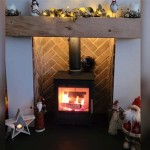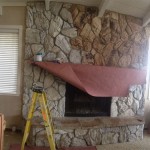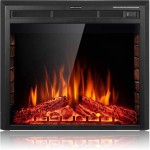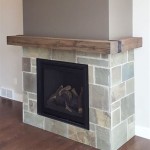How Does a Ventless Gas Log Fireplace Work?
Ventless gas log fireplaces offer a convenient and aesthetically pleasing alternative to traditional wood-burning fireplaces. They provide the ambiance and warmth of a fire without the need for a chimney or external venting system. Understanding the operational principles behind these appliances is crucial for making informed decisions about their suitability for a particular living space, as well as ensuring their safe and efficient use.
The key to a ventless gas fireplace lies in its ability to burn fuel exceedingly cleanly, minimizing the production of harmful emissions to levels deemed safe for indoor use. This involves a combination of burner design, fuel composition, and sophisticated safety features. The technology relies on complete combustion, where the gas is burned so efficiently that the primary byproduct released into the room is primarily carbon dioxide (CO2) and water vapor (H2O), similar to exhaled breath.
Despite their convenience, ventless gas log fireplaces are subject to strict regulations and safety standards. These regulations are in place to protect consumers from potential hazards associated with incomplete combustion, such as carbon monoxide (CO) poisoning. It is essential to understand these safety aspects and adhere to manufacturer’s instructions and local codes for proper operation and maintenance.
The Combustion Process and Fuel Composition
The operation of a ventless gas log fireplace hinges on a controlled combustion process. The fuel, either natural gas or propane, is meticulously mixed with air before ignition. This precise air-to-fuel ratio is carefully calibrated to promote complete combustion. The design of the burner itself plays a crucial role in achieving this complete burn.
Different burner designs are employed, but a common feature is the use of a highly porous ceramic or refractory material to distribute the gas evenly. This material provides a large surface area for combustion, ensuring that the fuel is exposed to sufficient oxygen. The material also retains heat, further promoting complete combustion and contributing to the radiant heat output of the fireplace.
The composition of the gas fuel is also important. Natural gas consists primarily of methane, while propane is composed of propane and butane. Both fuels can be burned cleanly under ideal conditions. However, impurities in the gas can lead to incomplete combustion and increased emissions. Therefore, the quality of the gas supply is a factor in the overall performance and safety of a ventless gas log fireplace.
Manufacturers of ventless gas logs often specify the type of gas fuel that is compatible with their appliances. Using the correct fuel is critical to prevent malfunctions and ensure that emissions remain within safety limits. Switching between fuel types without modification is strictly prohibited.
The “logs” themselves, typically made of ceramic or refractory materials, are designed to radiate heat and mimic the appearance of a real wood fire. These logs do not burn; they are heated by the flames emanating from the burner beneath them. The arrangement and design of the logs contribute to the realistic flame pattern and the overall aesthetic appeal of the fireplace.
Oxygen Depletion Sensors (ODS) and Safety Mechanisms
A critical component of a ventless gas log fireplace is the Oxygen Depletion Sensor (ODS). This safety device is designed to shut off the gas supply if the oxygen level in the room drops below a safe threshold. This can occur if incomplete combustion is taking place, or if the room is not adequately ventilated.
The ODS works by monitoring the pilot light. The pilot light flame impinges on a thermocouple, which generates a small electrical current. This current holds open the main gas valve. If the oxygen level in the room decreases, the pilot light flame will weaken, causing the thermocouple to cool down. As the thermocouple cools, the electrical current decreases, eventually causing the main gas valve to close, shutting off the gas supply to the burner.
The ODS is a fail-safe mechanism that is designed to prevent the buildup of dangerous levels of carbon monoxide. It is important to understand that the ODS is not a carbon monoxide detector. While it can help prevent carbon monoxide buildup in certain situations, it is not a substitute for a dedicated carbon monoxide detector.
In addition to the ODS, ventless gas log fireplaces may also incorporate other safety features, such as pressure regulators, overpressure shutoff valves, and flame supervision devices. These features are designed to ensure that the appliance operates safely and reliably under a variety of conditions.
It is paramount that the ODS is never bypassed or tampered with. Disabling the ODS can create a potentially life-threatening situation. Regular inspection and maintenance of the ODS are crucial to ensure its proper functioning. If the pilot light frequently goes out, it could be a sign that the ODS is malfunctioning or that there is an issue with ventilation.
Ventilation Requirements and Operational Considerations
Although ventless gas log fireplaces do not require a chimney or vent, they do require adequate ventilation. This is essential to ensure that the products of combustion, primarily carbon dioxide and water vapor, are properly dispersed and that the oxygen level in the room remains within a safe range.
Manufacturers typically specify the minimum room size and ventilation requirements for their ventless gas log fireplaces. These requirements are based on the BTU rating of the appliance and the expected rate of combustion. The room should be large enough to accommodate the fireplace and provide sufficient air volume for combustion.
Adequate ventilation can be achieved through various means, such as opening a window or door slightly, or using a whole-house ventilation system. The specific ventilation requirements will vary depending on the size of the room, the BTU rating of the fireplace, and the number of occupants in the room.
It is important to note that ventless gas log fireplaces are not intended for use in airtight spaces, such as bedrooms or bathrooms. These spaces typically have limited ventilation, which can lead to a buildup of combustion byproducts and a depletion of oxygen.
Furthermore, ventless gas log fireplaces are designed for supplemental heating. They are not intended to be the primary source of heat for a home. Prolonged use of a ventless gas log fireplace can lead to excessive moisture buildup and increased levels of carbon dioxide in the room.
Regular inspection and maintenance are essential for the safe and efficient operation of a ventless gas log fireplace. This includes cleaning the burner, inspecting the logs for damage, and checking the ODS for proper functioning. It is also recommended to have the fireplace professionally serviced annually to ensure that all components are working correctly.
Users must install carbon monoxide detectors within their homes, irrespective of whether they use ventless or vented gas appliances. These detectors should be positioned according to the manufacturer’s instructions, usually near sleeping areas. Regular testing of these detectors is also vital.
In conclusion, ventless gas log fireplaces offer a convenient way to add warmth and ambiance to a living space. However, it is crucial to understand their operational principles, safety features, and ventilation requirements to ensure their safe and efficient use. Adhering to manufacturer’s instructions, local codes, and performing regular maintenance are essential for preventing potential hazards and maximizing the benefits of these appliances.
.aspx?strip=all)
Ventless Fireplaces Explained Safety Of Vent Free Fires

Are Vent Free Gas Fireplaces Safe Ventless

How To Select And Install A Gas Fireplace Log Set Fireplaces Direct Learning Center

Vented Vs B Vent Direct Free Dixie S

What You Need To Know About Gas Fireplace Logs Fireplaces Direct Learning Center

Vented Vs Ventless Gas Fireplace Logs
Understanding How Direct Vent Works Heat Glo

How Gas Fireplaces Logs Work At Gasfireplaces Org

Vented Vs Ventless Gas Logs What S The Difference

What Is A Ventless Gas Fireplace Experts In Gaithersbutg Md
Related Posts








